Most of what we know about the Guanches has been pieced together from the writings of the Spanish Chroniclers and from what archaeologists have been able to find. The Guanches used to mummify their dead and many of the mummies were removed from the caves they had been laid to rest in. Some of these were bought long ago by collectors and many more are in museums today. There are probably further mummies that are still hidden away on the islands. They also practised the surgery known as trepanation in which a hole is drilled into the head of a living person. It is thought this was done to attempt to cure various ailments o9r possibly to release evil spirits.
Many examples of pottery and tools have survived too. It is known that they decorated their pots and made necklaces of shells and terra-cotta beads. The Guanches created objects known as "pintaderas" which has geometric designs on them and are thought to have been seals or stamps. They made knives from obsidian rock and wooden combs. They fashioned clothing from goat-skins and also used palm leaves and fibres.
The Guanches amused themselves by dancing and singing and holding contests in which the men wrestled, lifted heavy rocks and took part in a form of fencing with large wooden sticks. They were known to hold an annual Harvest Festival celebration too known as the Benesmen.
The Guanches were skilled at pole vaulting across ravines on the steep mountainsides and were very strong and agile people. In La Gomera they invented a means of communicating across vast distances by whistling, which is known as “Silbo” and is still practised by some people today.
It is known that Guanche women were held in very high regard and some were priestesses. They had spiritual beliefs and thought that an evil spirit known as “Guayota” lived in Mt Teide. As the mountain is a volcano this makes a lot of sense.
There was a hierarchy for the Guanche men with kings or “menceys”, each of whom had his own noblemen and advisors. There were none menceys in Tenerife and nine “menceyatos” or kingdoms.
The Guanches kept dogs, pigs and goats and also farmed the land, as well as being hunter-gatherers. A basic food was “gofio” made from roasted and ground cerearl flour and this is still popular on the islands today. They also ate fish they caught in the sea, fruit they gathered, honey and many edible wild plants and herbs.


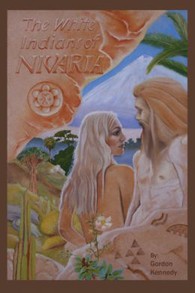



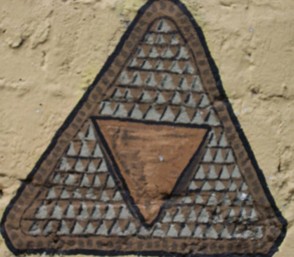
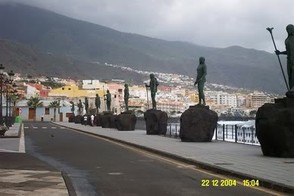
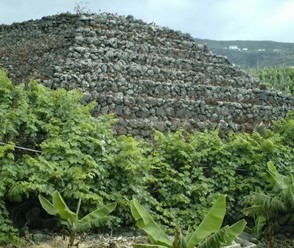


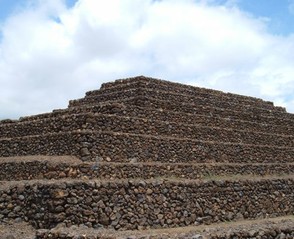
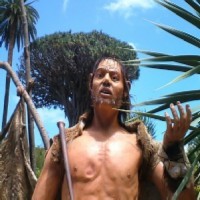

 What to see and do in Icod de los Vinoson 06/28/2016
What to see and do in Icod de los Vinoson 06/28/2016
 Herbs of the Sun, Moon and Planets is the follow up to Herbs of the Northern Shamanon 10/03/2015
Herbs of the Sun, Moon and Planets is the follow up to Herbs of the Northern Shamanon 10/03/2015
 Music for Pagan Weddingson 03/07/2013
Music for Pagan Weddingson 03/07/2013
 Los Silos is part of Tenerife’s Low Island or Isla Bajaon 02/23/2013
Los Silos is part of Tenerife’s Low Island or Isla Bajaon 02/23/2013

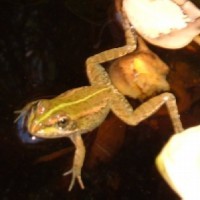
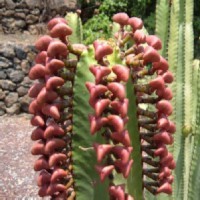
Comments
That sounds a wonderful idea so please keep me posted if you do intend coming back!
No worries pal! And many thanks to you. Maybe if I come back over this year I will message you in advance. It would be fun on my part to discuss these topics over a bottle of Malvasia and chupetas de Ron Canario in the shadow of an ancient pyramid! :) Its always good to meet people that give a damn. :)
I know where you mean now so thanks for explaining!
Hi Bardo, sorry for the late reply. No I mean the type of woodland/ forest found in Ramblas de Castro, near the coast in the north, and the mountain ridge on the side of the valley that over looks Icod de los Vinos. These tiny forests are comprised of Palm, Juniper, laurasilva and Dragon as most of the lowlands of Tenerife where once covered in these lush tropical forests all the way down to the coastline, (Ramblas de Castro is a good example). Better examples of what Tenerife lowlands used to look like exist on other islands (la gomera, la palma). The cloud forests on Tenerife once only represented a tiny fraction of the many types of forest once found on Tenerife, and hopefully to be found again with the help of the community, tourist awareness and reforestation projects.
Thanks for your detailed feedback, Tazmania! I live near to Icod where the Drago MIlenario is and there is an almost as large tree up the hill that has its trunk hollowed out and supported a beehive though they seem to have died now. There are more than two cloud forest/laurisilna forests here though tragically some of them got burned badly in forest fires in August.
One of my favourite things about the Guanches was the historical account of the mega Draco Tree that was visited by an explorer in the late 1700'ish (me think), He dated the Draco tree to be well over 6,000 years old and that it had grown to magnificent heights, unfortunately it collapsed due to a huge tropical storm. Historical records say that the Guanches worshipped this particular specimen of Draco tree and that the Guanches hollowed out the trunk of the tree into a sanctuary (possibly for religious reasons). one of the best surviving examples that remain today are found in the north of Tenerife. These surviving specimens where said to be used by local kings and nobles to hold parliament and court. These Guanche administrative proceedings where said to take place underneath the huge dome like canopy of these Draco trees. (I'm presuming that this is related to a common belief amongst many ancient cultures that adores the tree as a symbol of wisdom and knowledge).
Another thing that's worthy of note with regards to the Guanches, Spanish history dictates that the Guanches were "savages that lived in caves" and that they had "no knowledge of sea travel". Well again you can find Spanish propaganda at play, since there are independent historical accounts from explorers that visited and stayed with the Guanches on different islands years before first arrivals of the conquest. These historical accounts record observations of Guanches building small boats with sails for fishing, inter island connection and to steal cattle from neighbouring kingdoms and islands. And with regards to living in caves which I don't deny some populations of Guanches did live and/or store food in troglodyte cave homes. But many Guanches also lived in villages/towns built with stone, small round houses/ huts with palm roofs and decoratively stained walls. The Spanish forces at the time also mention that they practised what the Spanish call "rudimentary fortification" of their settlements. Although in real terms who knows what the Guanche world truly looked like? Since pre 1500's Tenerife used to have subtropical rainforest that reached to the very coast line, currently on Tenerife, only two examples of these ancient prehistoric rainforests survive today. :(
Its great so many people are taking an interest in Canarian/ pre Colombian history. It's important to note that it has been confirmed that up to 70-80% of the gene pool in present day native Canarians is still Guanche. These genetic findings where published by the University of La Laguna, S.Cruz de Tenerife. With regards to the pyramids, many are authentic, for example Guimar was a well known Guanche stronghold aswell as Icod de Los Vinos in the north. The problem with Canarian history is that its shrouded incorrect information and is shining example of well and brutally applied colonialism. No doubt most of Latin Americas archaeological artefacts would be in a similar state to he Canarians had they stayed a part of the Spanish empire, since destruction of the native culture is one of the primary goals of colonialism, not to mention that most of the Canarian pyramids on Tenerife sit on valuable urban development land. Canary Islands has a long separatist history, coupled with revolutionary flare ups every other decade since first colonised, right up to the 1970's. The Guanche heritage has long played the mascot for most revolutionary groups in the Canaries, thus Spain has worked very hard to eradicate all interaction and knowledge of the Guanche culture to present day Canarians, which is never completely possible. Perhaps the Spanish feel we deserve it, Canarians gave them the hardest time of all, we gave them the Vietnam of the 1400's, except the Spanish won ofc.
Ken Fisher the former president of the English Library here and myself are working on a project now to get to the bottom of this, literally in many ways. Gordon Kennedy is sending me some more copies of his book over too. There are photos I took in it. I am going in a book by Filip Coppens that is being published too. He came over here a couple of years back and wrote about the pyramids then: http://www.philipcoppens.com/nap_art1...
Nice one! I'd not heard of these people until I read this (excepting your comment elsewhere). I love the notion of that whistling.